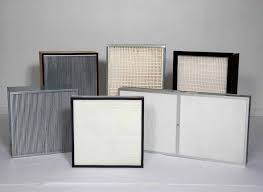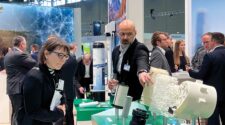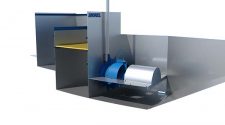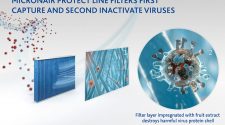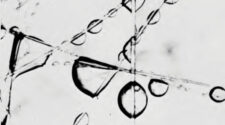ULPA filters require more energy and therefore higher energy costs but are more efficient than HEPA filters. Where is this efficiency needed?
HEPA or ULPA filters are needed in a number of locations in a semi-conductor industry. They are needed in the pods which transport wafers from tool to tool. They are needed in the tool location, and they are needed in the general environment surrounding the operations.
There is some controversy about the need for very low particulate levels in the areas surrounding the enclosed pods and tools. The fact that line sizes keep decreasing means smaller and smaller particles can be detrimental. Therefore, the industry is tending to use highly efficient filters in the ambient areas around the operations. But the particulate levels in the ambient air would be considerably different than those in the tools themselves. Another factor is the pre-filter, the HEPA filter, and ULPA filter life will be a function of the efficiency of the pre-filter and is not a given.
Glass Versus Synthetic
There is a debate between the use of glass media and synthetic media filters. American Air Filter makes the case for the synthetic media in the following example.
A global semiconductor company needed to improve energy efficiency in one of its newest manufacturing facilities in the U.S. In particular, the customer focused on a new fab with 5,800 4’x4’ fan filter units (FFUs) with glass media filters installed. Within other cleanrooms in similar facilities supporting wafer manufacturing, the traditional glass media drove energy costs up due to its relatively high-pressure drop. Additionally, it was prone to damage during filter installation, maintenance, changeouts and storage.
To achieve the required energy savings in the new fab, AAF recommended:
- MEGAcel II ePTFE ULPA filters, which have only about half the resistance of glass media filters and offer superior durability.
AAF became involved through the general contractor overseeing the project, whose primary mission was to supply a more energy-efficient alternative at a competitive price. For the customer to fully understand the value that the MEGAcel II ePTFE ULPA membrane media filters provide, it was imperative that AAF work with them directly. AAF presented a total cost of ownership (TCO) summary to the customer to demonstrate the long-term energy, labor and material cost savings achieved by switching to membrane media ULPA filters. After reviewing the side-by-side comparison of glass versus membrane ULPA filters, the customer purchased 5,800 MEGAcel II ePTFE ULPA filters for the facility.
HEPA or ULPA filters are needed in a number of locations in a semi-conductor industry. They are needed in the pods which transport wafers from tool to tool.
Hollingsworth and Vose
Hollingsworth and Vose make the case for the glass media filters. H&V have glass ULPA filter media installations all over the world. The media has high retention capacity for particulate so that the loading increases slowly. This is cited as an advantage over synthetic media where the pressure drop rises more quickly with dust loading.
An unanswered question in the case of the synthetic filters is whether the pressure drop across the filter would increase substantially overtime, and therefore the savings would be less compared to the glass filters after a number of years of operation.
AMC
Another variable is the AMC or filter. Airborne molecular contamination is a concern, and there are filters devoted, just for removing these contaminants. So, the question is what impact the selection of the AMC filter has on the selection of the ULPA filter.
Concerns of Glass and Synthetic Filters
The fragility of the glass filters is a question of concern for several reasons. One it slows down the installation process if some of the filters are rejected because of breakage. Also, the potential for breakage impacting the efficiency of the installed filters is of concern.
One of the concerns about synthetic filters is the potential for PFAS contamination. The semi-conductor industry association is devoting funds to minimize products that utilize PFAS in the production of the chips. All membrane alternatives to ePTFE are becoming available but the questions are cost and performance.
Energy Cost
Energy cost decisions are complex. Sustainability dictates that energy consumption be evaluated regardless of cost. Whereas the local purchasing group is looking at the cost of the higher energy. There is a wide variation in energy cost per kilowatt hour within states in the U.S. and certainly from country to country. So, on a particular case, the energy cost may be half what it is in another country, but the CO2 omissions would be the same.
Decision-Maker
Another consideration is the decision-maker behind the filter purchase. Is it the end-user or is it the tool manufacturer or is it the supplier of the main environment? In the case of the Taiwan purchase of AAF filters, the decision-maker was the contractor. However, the guidance by the end-user may have been substantial.
Purchase Options
Is there a package advantage to the semi-conductor purchase? In other words, if the supplier offers the fan filter unit, the ULPA filter, and the AMC filter, can the semiconductor manufacturer be assured of greater reliability?
In the rapidly changing semiconductor industry, developments, relative to alpha filters need to be continually reviewed.
McIlvaine editors invite readers to provide their comments on this ongoing saga.
This article was written in collaboration with Hunter Hall.


